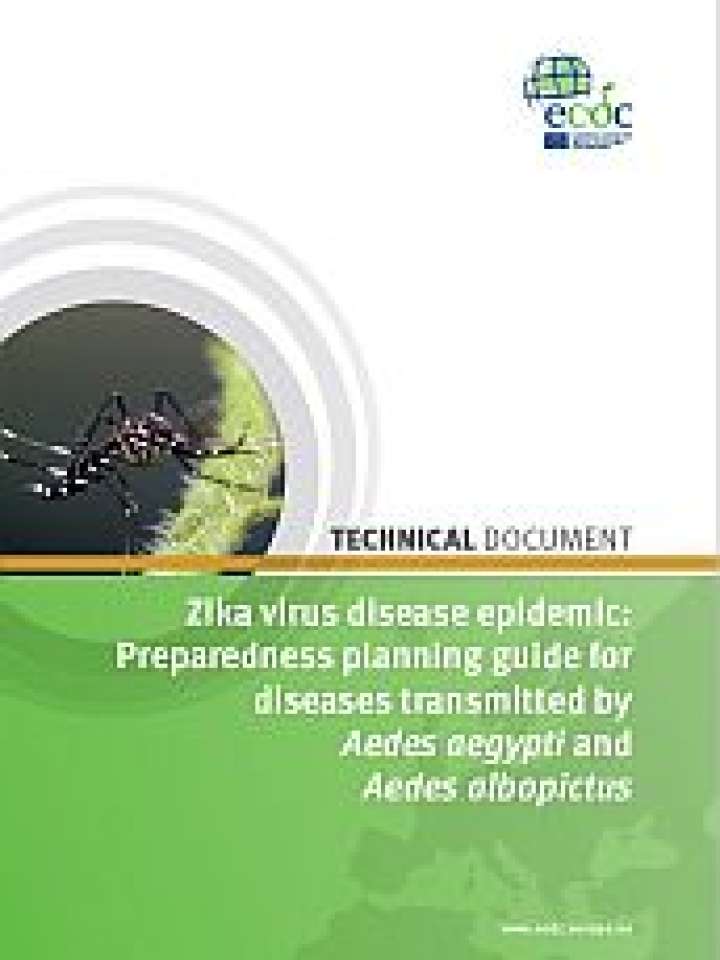Zika virus disease epidemic: Preparedness planning guide for diseases transmitted by Aedes aegypti and Aedes albopictus
The aim of this document is to highlight preparedness activities that can effectively contribute to reduce the risk of importation and local transmission of pathogens transmitted by Aedes aegypti and Aedes Albopictus. The main diseases of concern in this context are Zika, dengue, chikungunya and yellow fever.
This document focuses mainly on the transmission of these four diseases by mosquito bite as this is the main mode of transmission. However, other modes of transmission, such as sexual transmission, perinatal transmission and potential transmission through blood transfusion, are also considered.
This document draws on internal consultations among ECDC experts, on previous ECDC publications, and on documents by national and international organisations that deal with preparedness planning for diseases transmitted by Ae. aegypti and Ae. albopictus.
Experts for preparedness activities in Member States can use this document to determine which capacities and capabilities their organisations need to strengthen in order to detect cases of importation and/or local transmission of Zika virus, how to respond to the threat of Zika virus, and how to deliver risk communication messages.
On 1 February 2016, WHO declared that the observed increase of congenital microcephaly and other neurological disorders associated with the Zika outbreak constituted a public health emergency of international concern. The threat posed by Zika virus infection highlights the need to reinforce preparedness for mosquito-borne diseases in EU/EEA countries, especially for pathogens transmitted by Ae. aegypti and Ae. albopictus, which are vectors of Zika virus and other arboviruses, for example dengue, chikungunya and yellow fever.
Explore further
